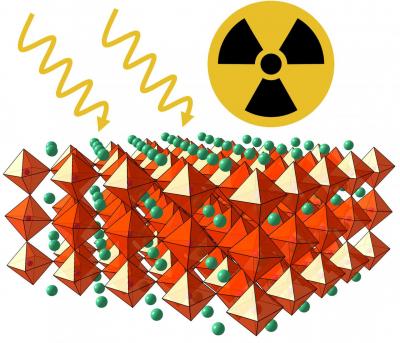Researchers from Northwestern University and Argonne National Laboratory research team have developed a perovskite-based next-generation device for nuclear radiation detection that could provide a significantly less expensive alternative to the detectors now in commercial use.

The high-performance material is used in a device that can detect gamma rays, weak signals given off by nuclear materials, and can efficiently identify individual radioactive isotopes. The new material also has the advantage of inexpensive production. Potential uses for the new device include more widespread detectors for nuclear weapons and materials as well as applications in biomedical imaging, astronomy and spectroscopy.
In 2013, Argonne published a scientific study noting the promise of cesium lead bromide in the form of perovskite crystals for high-energy radiation detection. Since then, the researchers have worked to purify and improve the material.
The breakthrough came when Yihui He, a postdoctoral fellow and the paper's first author, took the improved material and reconfigured the semiconductor device. Instead of using the same electrode on either side of the crystal, he used two different electrodes. With this asymmetrical design, the device only conducts electricity when gamma rays are present.
The researchers compared the performance of their new cesium lead bromide detector to the conventional cadmium zinc telluride (CZT) detector and found it performed just as well in detecting gamma rays with high resolution from cobalt-57. "We achieved the same performance in two years of research and development as others did in 20 years with cadmium zinc telluride, the expensive material that is currently used," the team said.
It is important to note what the gamma-ray emitting material is, Kanatzidis stressed, because some materials are legal and some are illegal. Each radioactive isotope possesses its own "fingerprint": a different decay behavior and a unique characteristic gamma-ray emission spectrum. The new cesium lead bromide detector can detect these fingerprints.
In the study, the researchers found the detector successfully identified radioactive isotopes americium-241, cobalt-57, cesium-137 and sodium-22. The researchers also produced larger crystal samples to demonstrate the material can be scaled up.

